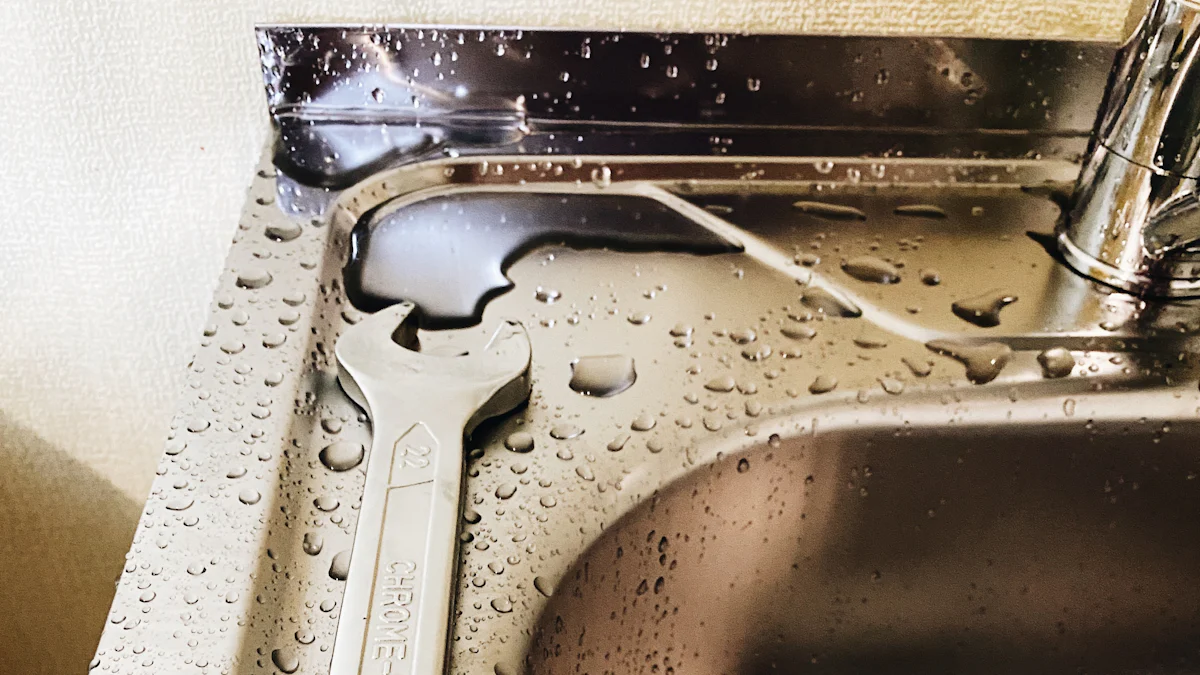
A basin spanner, also known as a sink wrench, is a specialized plumbing tool. This tool helps turn fasteners and pipes in confined spaces. The long handle and self-adjusting gripping head make it indispensable for plumbing tasks. Professional plumbers and DIY homeowners use this tool to access hard-to-reach nuts under sinks or behind appliances. Knowing how to use a basin spanner can simplify many plumbing jobs.
Understanding the Basin Spanner

Definition and Purpose
What is a Basin Spanner?
A basin spanner, also known as a sink wrench, is a specialized plumbing tool. The design includes a long handle and a pivoting gripping head. This tool helps reach and turn fasteners in tight spaces, such as under sinks or behind toilets. The basin spanner’s unique structure makes it essential for many plumbing tasks.
Common Uses in Plumbing
Plumbers use basin spanners to tighten or loosen nuts holding faucets in place. These nuts often reside in hard-to-reach areas. The tool’s long handle and swiveling jaw make it possible to work in confined spaces. Basin spanners also help with installing or removing fixtures without disassembling the entire setup. This tool simplifies tasks that would otherwise be very challenging.
Types of Basin Spanners
Adjustable Basin Spanners
Adjustable basin spanners feature a dual-directional spring-loaded head. This head securely grips nuts of various sizes. The adjustable nature allows for versatility in different plumbing tasks. The spring-loaded mechanism ensures a firm grip, making the job easier and more efficient.
Fixed Basin Spanners
Fixed basin spanners have a non-adjustable head. These tools are designed for specific nut sizes. The fixed head provides a stable grip but lacks the versatility of adjustable models. Plumbers often use fixed basin spanners for repetitive tasks involving the same nut size.
Telescopic Basin Spanners
Telescopic basin spanners offer an extendable handle. This feature allows for better reach in extremely tight spaces. The handle can telescope from 10 inches to 17 inches. The adjustable length makes these spanners highly adaptable. Plumbers find telescopic basin spanners useful for both residential and commercial plumbing tasks.
How to Use a Basin Spanner

Preparation
Gathering Necessary Tools
Before starting any plumbing task, gather all necessary tools. A basin spanner, also known as a sink wrench, will be essential. Other tools may include a flashlight, a bucket, and plumber’s tape. These items will help in completing the task efficiently.
Safety Precautions
Safety should always come first. Wear safety goggles to protect your eyes from debris. Gloves will protect your hands from sharp edges and chemicals. Ensure the water supply is turned off to avoid any accidental flooding. Proper lighting will help in seeing the work area clearly.
Step-by-Step Guide
Positioning the Basin Spanner
Start by positioning the basin spanner correctly. The long handle and pivoting head will help in reaching tight spaces. Place the gripping head around the nut that needs tightening or loosening. Ensure the head grips the nut securely.
Tightening or Loosening Nuts
Once positioned, use the handle to turn the spanner. For tightening, turn the handle clockwise. For loosening, turn it counterclockwise. Apply steady pressure to avoid slipping. The self-adjusting head will maintain a firm grip on the nut.
Checking for Leaks
After completing the task, check for leaks. Turn the water supply back on slowly. Observe the area around the nut for any signs of water leakage. If leaks are present, use the basin spanner to tighten the nut further. Repeat the process until no leaks are detected.
Tips and Best Practices
Maintenance of Basin Spanners
Cleaning and Storage
Regular cleaning ensures the longevity of a basin spanner. After each use, wipe the tool with a clean cloth to remove any debris or residue. For stubborn grime, use a mild detergent and water. Dry the spanner thoroughly to prevent rust. Store the basin spanner in a dry place. A toolbox or a dedicated drawer works well. Proper storage keeps the tool in good condition and ready for the next use.
Regular Inspection
Inspect the basin spanner regularly for signs of wear and tear. Check the gripping head for any damage or deformation. Ensure the handle remains sturdy and free from cracks. A well-maintained tool performs better and lasts longer. Replace any worn-out parts immediately to maintain the tool’s efficiency.
Troubleshooting Common Issues
Dealing with Stubborn Nuts
Stubborn nuts can pose a challenge during plumbing tasks. Use a pipe or the back end of an adjustable wrench to increase leverage on the T-bar. This extra force helps in loosening tight nuts. A telescopic basin spanner offers an extendable shaft. This feature provides better reach for faucets mounted behind deep sink basins. The claw can grab a nut from any position around it. Adjust the head to a comfortable position for turning the wrench.
“The basin wrench removes and tightens faucet mounting and shank nuts as well as toilet fill valve nuts, offering reliable performance with each use.”
Avoiding Damage to Fixtures
Avoiding damage to fixtures requires careful handling of the basin spanner. Apply steady pressure when tightening or loosening nuts. Sudden force can cause the tool to slip, potentially damaging the fixture. Always ensure a secure grip before applying pressure. Proper technique minimizes the risk of damage and ensures a successful plumbing task.
“One friendly word of advice about basin wrenches: They operate on the same principle as a pipe wrench – bottom teeth angled forward and top teeth angled rearward. They bite in as you turn the right way.”
A basin spanner proves essential for both professional plumbers and DIY enthusiasts. This tool simplifies tasks in tight spaces, making plumbing jobs more manageable. Practicing the steps and tips provided will enhance proficiency. Regular use of a basin spanner ensures reliable performance and longevity.
For those needing further guidance, consider additional reading or seeking professional advice. Understanding how to use a basin spanner can transform challenging plumbing tasks into straightforward projects.
See Also
Discovering the Range of Socks for Males and Females
Top Tips for Warm Winter with Soft Comfort Towel Socks
